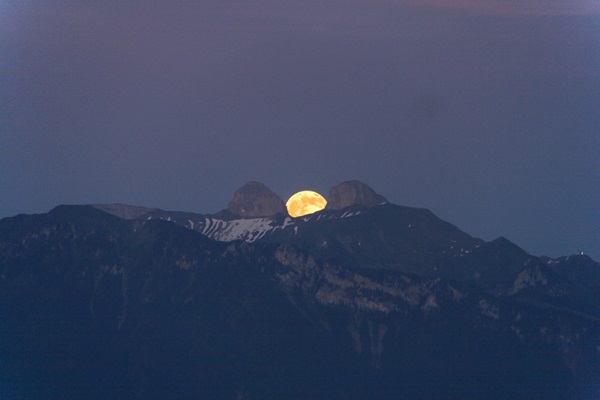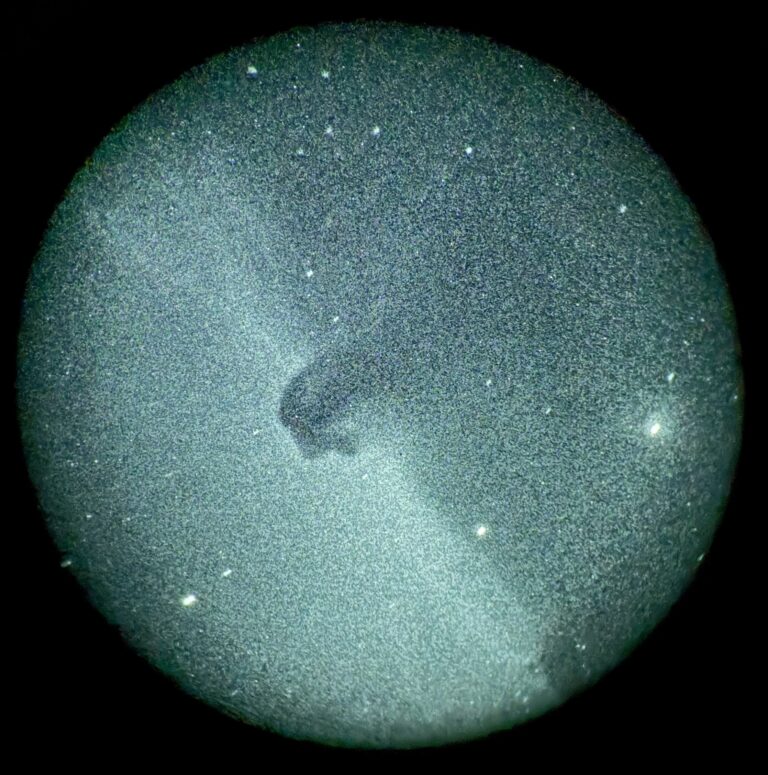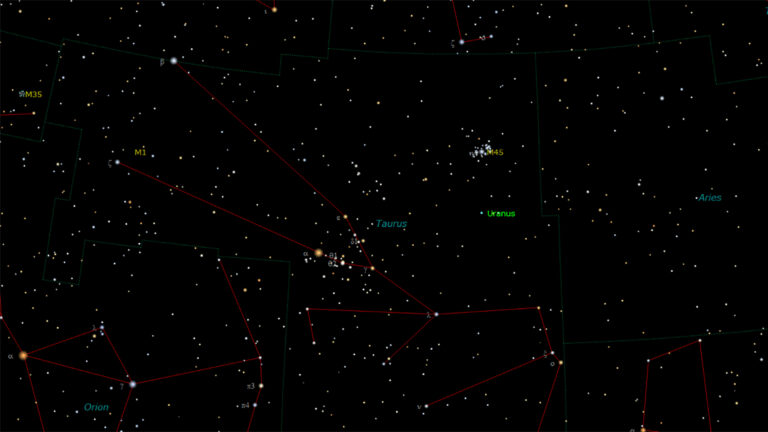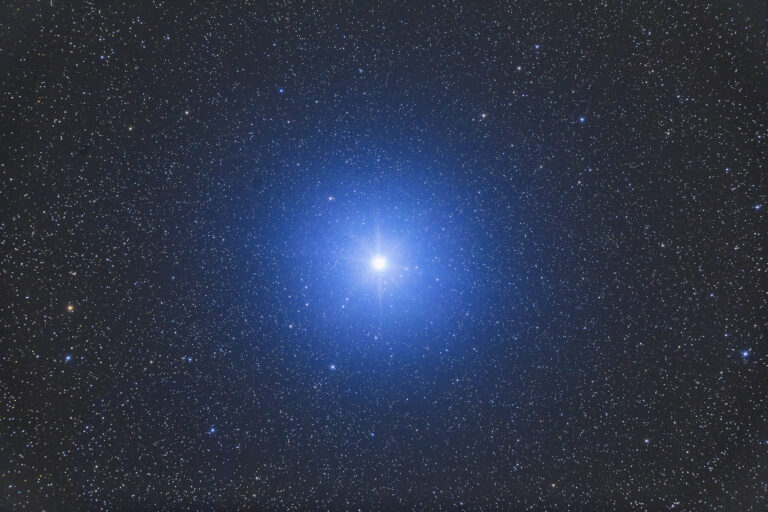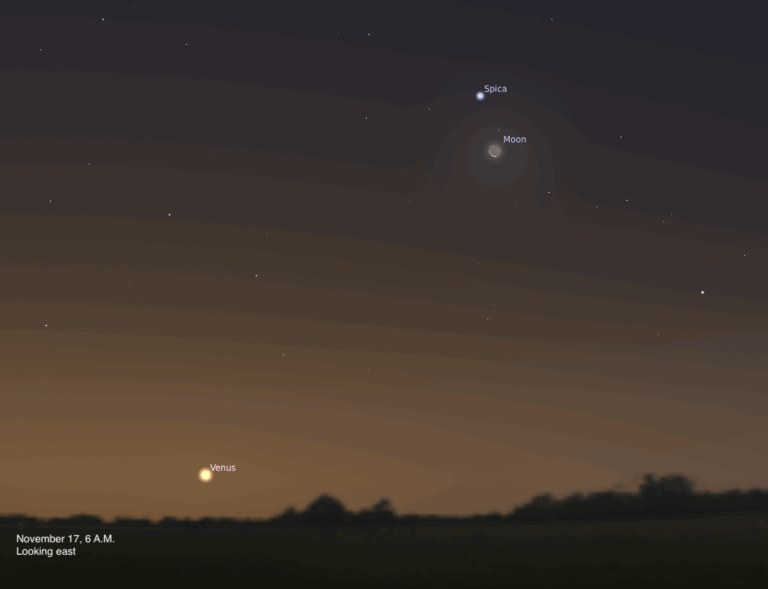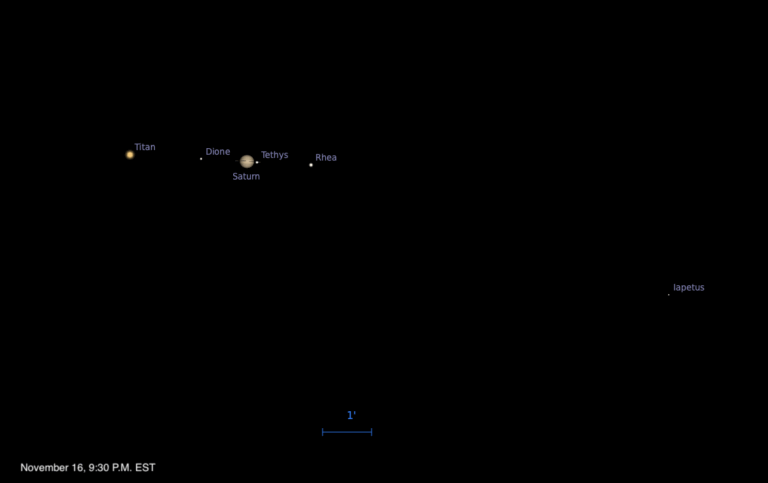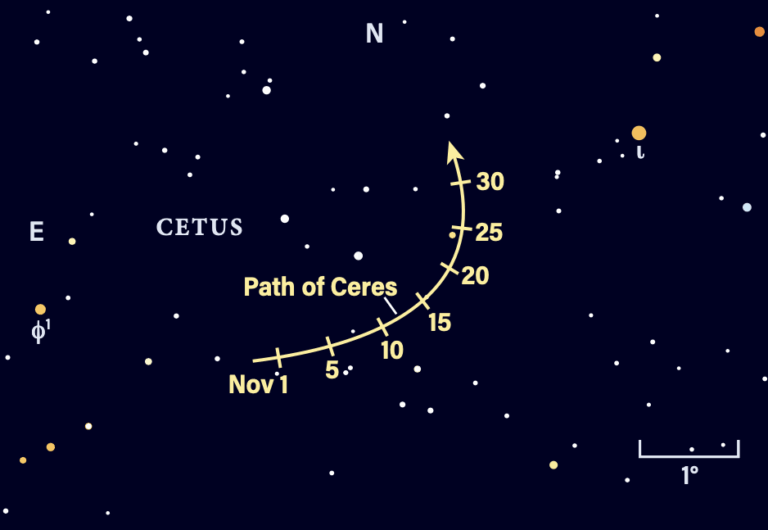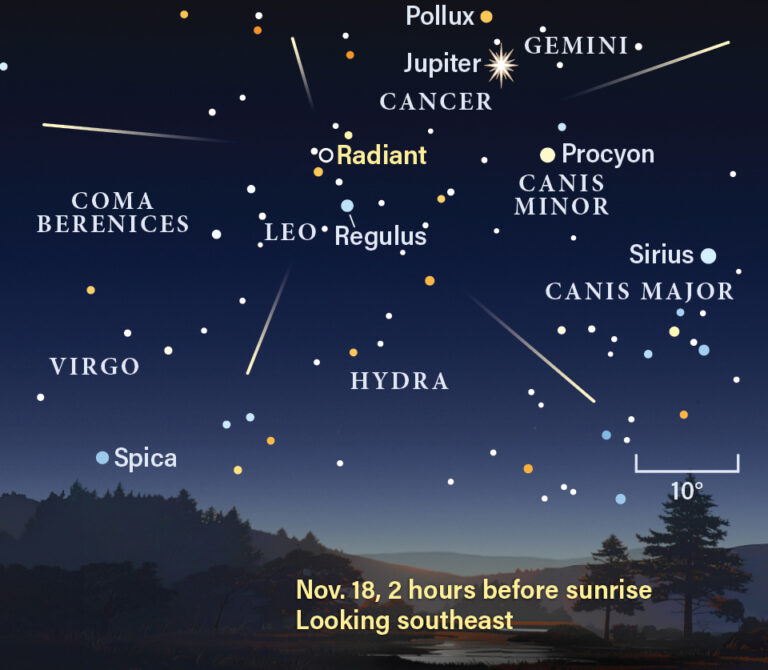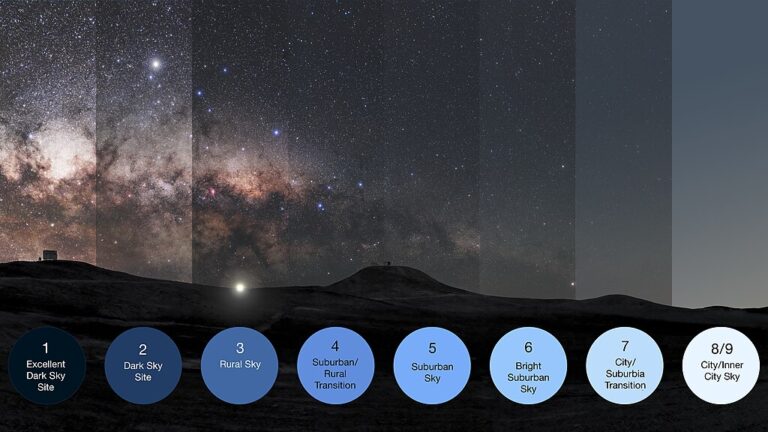Key Takeaways:
Look high in the east after darkness falls this week and you should see autumn’s most conspicuous star group. The Great Square of Pegasus stands out in the evening sky at this time of year, though it appears balanced on one corner and looks more diamond-shaped. These four almost equally bright stars form the body of Pegasus the Winged Horse. The fainter stars that form the rest of this constellation’s shape trail off to the square’s west.
Saturday, October 5
First Quarter Moon arrives at 12:47 p.m. EDT. Our satellite rises in the southeast around 2:30 p.m. local daylight time, but it doesn’t become prominent until the Sun sets shortly before 7 p.m. (The Moon then lies due south and about one-third of the way to the zenith.) After darkness falls, the Moon’s half-lit orb appears in northern Sagittarius, above the handle in that constellation’s conspicuous Teapot asterism. The Moon also serves as a guide for finding Saturn this evening. The ringed planet is the bright point of light just a couple of degrees to Luna’s right.
Sunday, October 6
Observers of the outer solar system can get good views of Uranus during the late evening hours. The ice giant planet rises during twilight and climbs nearly halfway to the zenith in the east-southeast by 11 p.m. local daylight time. It reaches its peak some 60° above the southern horizon around 2 a.m. Uranus glows at magnitude 5.7 against the backdrop of southern Aries the Ram. Use binoculars to find the planet 2.5° due south of the similarly bright star 19 Arietis. A telescope reveals Uranus’ blue-green disk, which spans 3.7″. To learn more about viewing Uranus and its outer solar system cousin, Neptune, see “Observe the ice giants” in October’s Astronomy.
Monday, October 7
Saturn remains a glorious sight this week. The ringed planet resides among the background stars of Sagittarius the Archer, a region that appears nearly 30° above the southern horizon an hour after sundown and doesn’t set until close to midnight local daylight time. Saturn shines at magnitude 0.5 and appears significantly brighter than any of its host constellation’s stars. Although a naked-eye view of the planet is nice, seeing it through a telescope truly inspires. Even a small instrument shows the distant world’s 17″-diameter disk and the spectacular rings, which span 38″ and tilt 25° to our line of sight. As an added bonus, the planet reaches quadrature today, which signifies that a line from the Sun to Earth and then to Saturn forms a right angle. Observationally, this means that Saturn’s shadow extends farthest east of the planet and shows up plainly on the rings, giving the world a striking 3D appearance.
The Moon’s absence from the morning sky these next few days provides observers with an excellent opportunity to view the zodiacal light. From the Northern Hemisphere, the time around the autumnal equinox (which occurred two weeks ago) is the best for viewing the elusive glow before sunrise. It appears slightly fainter than the Milky Way, so you’ll need a clear moonless sky and an observing site located far from the city. Look for a cone-shaped glow that points nearly straight up from the eastern horizon shortly before morning twilight begins (around 5:30 a.m. local daylight time at mid-northern latitudes). The Moon remains out of the morning sky until October 12, when the waxing gibbous returns and overwhelms the much fainter zodiacal light.
Wednesday, October 9
Neptune appeared at its best at opposition one month ago, but its visibility hardly suffers this week. The outermost major planet lies some 30° above the southeastern horizon once darkness falls and climbs highest in the south around 11 p.m. local daylight time. Neptune glows at magnitude 7.8, which is bright enough to spot through binoculars if you know where to look. The trick is to find the 4th-magnitude star Phi (φ) Aquarii, which lies about 15° (two binocular fields) east-southeast of Aquarius’ distinctive Water Jar asterism. Tonight, Neptune appears 0.9° west-southwest of Phi. When viewed through a telescope, the ice giant planet shows a blue-gray disk measuring 2.3″ across.
Thursday, October 10
Although the Orionid meteor shower won’t peak for another two weeks (the morning of the 22nd), you should see a few “shooting stars” associated with it before dawn these next few days. The Moon-free observing conditions in the morning sky now offer better viewing prospects than the waning Moon will at the shower’s peak. These meteors appear to radiate from the northern part of the constellation Orion the Hunter.
The Moon reaches apogee, the farthest point in its orbit around Earth, at 2:29 p.m. EDT. It then lies 252,214 miles (405,899 kilometers) from Earth’s center.
Friday, October 11
Jupiter continues to dominate the early evening sky from its perch in southern Ophiuchus the Serpent-bearer. The giant planet shines at magnitude –2.0 and stands some 15° above the southwestern horizon as twilight fades to darkness. When viewed through a telescope, Jupiter shows a 35″-diameter disk with striking details in its dynamic atmosphere. You also should see four bright points of light arrayed around the planet: the Galilean moons Io, Europa, Ganymede, and Callisto.
The night sky’s most conspicuous harbinger of winter now rises in the east around midnight local daylight time. The constellation Orion the Hunter appears on its side as it rises, with ruddy Betelgeuse to the left of the three-star belt and blue-white Rigel to the belt’s right. As Orion climbs higher before dawn, the figure rotates so that Betelgeuse lies at the upper left and Rigel at the lower right of the constellation pattern.
Sunday, October 13
Full Moon officially arrives at 5:08 p.m. EDT, but it will look completely illuminated all night. You can find it rising in the east shortly after sunset and peaking in the south around 1 a.m. local daylight time. It dips low in the west by the time morning twilight starts to paint the sky. The Moon lies in southeastern Pisces near that constellation’s border with Cetus. October’s Full Moon also goes by the name “Hunter’s Moon.” In early autumn, the Full Moon rises about half an hour later each night compared with a normal lag close to 50 minutes. The added early evening illumination supposedly helps hunters track down their prey.

